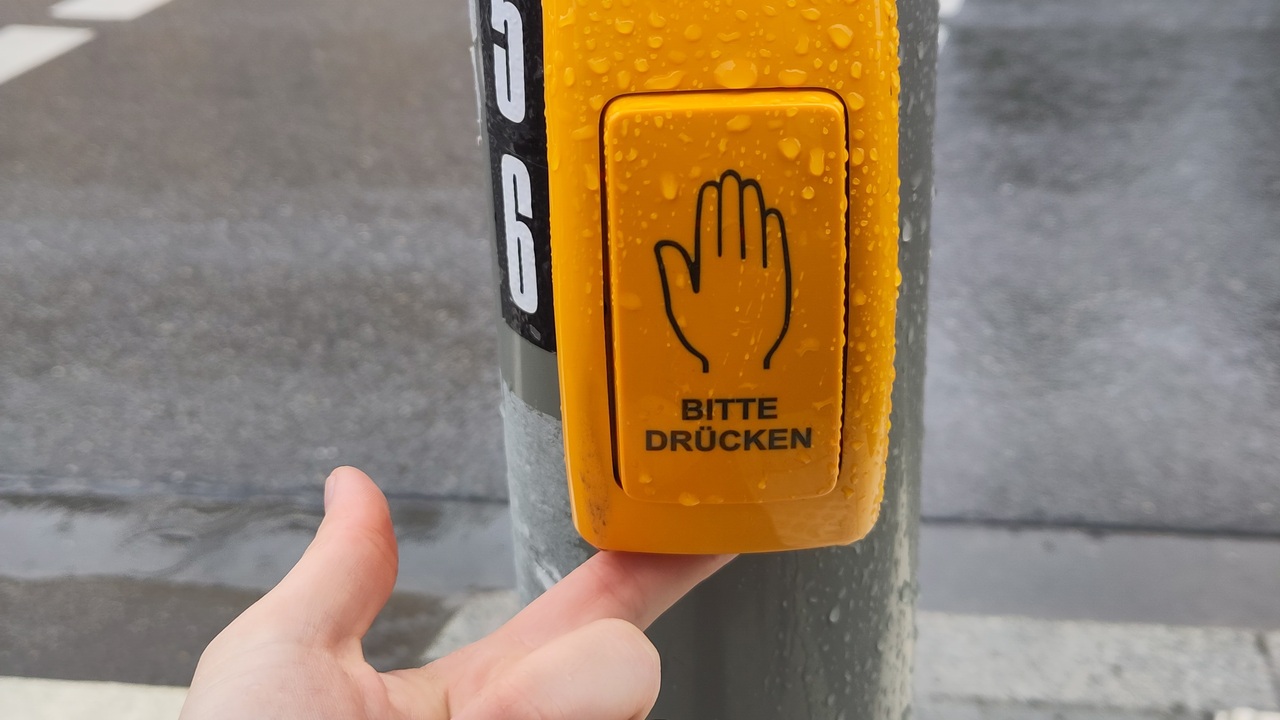The Purpose of the Second Button at Traffic Lights
Core Concepts
The author highlights the importance of the second button at traffic lights for visually impaired individuals and explains its functionality to enhance accessibility.
Abstract
The article delves into the often overlooked second button at traffic lights, explaining its significance for visually impaired individuals. This button, located on the underside of the traffic light box, serves as an auditory signal for orientation and features tactile indicators for direction and crossing alerts. Additionally, it adjusts its volume based on ambient noise levels to ensure visibility in busy environments.
Zweiter Knopf an der Ampel: Wozu soll er gut sein?
Stats
Der Knopf an der Unterseite der Ampel zeigt durch einen tastbaren Pfeil die Gehrichtung an.
Wird die Ampel grün, vibriert der Knopf an der Unterseite oder es ertönt ein schnelles Piepen.
Gefällt dir dieser Beitrag? 3723 302 Vielen Dank für deine Stimme!
Quotes
"Der Ton dient blinden Menschen oder Menschen mit einer Sehbehinderung zur Orientierung."
"Damit blinde Menschen oder Menschen mit Sehbehinderung den Ampelkasten finden, sendet er einen langsamen Klopfton aus."
Key Insights Distilled From
by Ben Deckarm at utopia.de 02-07-2024
https://utopia.de/ratgeber/zweiter-knopf-an-der-ampel-wozu-soll-er-gut-sein_519355/
Deeper Inquiries
How can cities better educate the public about the functionality of these secondary buttons?
Cities can improve public awareness by implementing educational campaigns through various channels such as social media, websites, and informational brochures. They could also collaborate with organizations that support visually impaired individuals to spread information about the purpose of these secondary buttons. Additionally, incorporating signage near traffic lights explaining the function of the second button can help raise awareness among pedestrians.
What are some potential drawbacks or limitations of relying on auditory signals for navigation?
One drawback is that auditory signals may not be effective in noisy environments where they could get drowned out by surrounding sounds. Another limitation is that individuals who are both visually and hearing impaired might struggle to perceive these signals effectively. Furthermore, reliance solely on auditory cues may lead to a lack of spatial awareness and potentially increase safety risks if individuals do not have other means of orientation.
How can technology be further integrated to enhance accessibility for visually impaired individuals beyond traffic lights?
Technology can play a crucial role in enhancing accessibility for visually impaired individuals beyond traffic lights. For instance, smartphone applications equipped with GPS technology and voice guidance systems can assist users in navigating unfamiliar areas safely. Wearable devices like smart glasses or haptic feedback systems could provide real-time environmental information through vibrations or audio cues. Moreover, advancements in artificial intelligence and machine learning could enable more sophisticated solutions tailored to individual needs, improving overall independence and mobility for visually impaired individuals.
0
